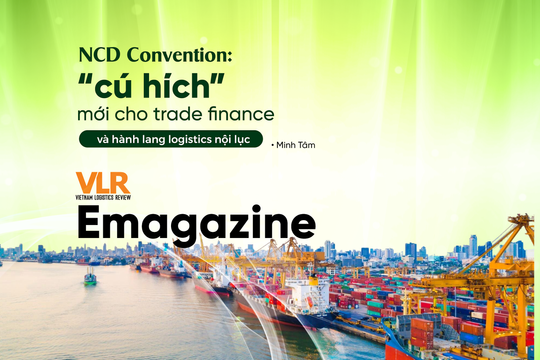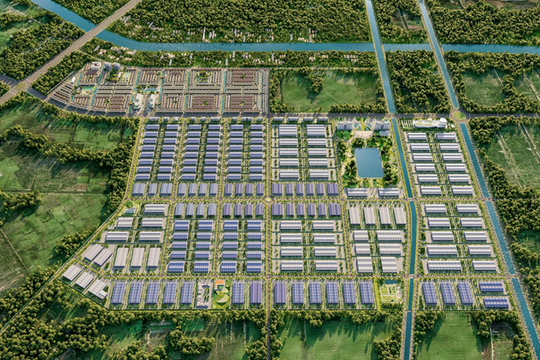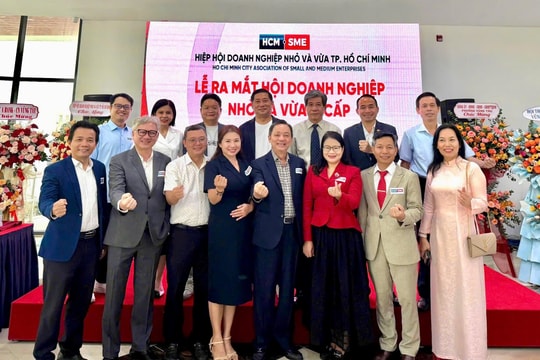Logistics has been playing an important role in the world where most of nations have joined WTO and been carrying out development strategies on export and international trade. And it has been the same in Vietnam, especially as a member of WTO at the time of implementing commitments in 2014 coming near and in the year 2015 when ASEAN Economic Community is established and mutual development policies are carried out for a harmoniously developing ASEAN market.
Gradually higher export rate in GDP has been a motivation and important basis for logistics economy to develop. Development of any economy needs strategies and strategic implementation with fully fledged development models. This is a basic matter being frequently discussed by Vietnamese logistics experts – the matter that needs thorough research.
VIETNAM LOGISTICS DEVELOPMENT SITUATION
Research on logistics in Vietnam after joining WTO has been developing. According to WB’s evaluation on logistics research, LPI (Logistics Performance Index) had an increase from 2.89 in 2007 to 2.96 in 2010 and reached level 3 in 2012. This is an index that generally evaluates logistics development in various fields of nations. However, in terms of quality and competition ability, Vietnam has an unstable point of growth (chart 1). It can be said that there are improvements in infrastructures and technologies, competition ability showing through logistics services providing activities show signs of decrease.
Table 1. Logistics evaluation of ASEAN countries
Number | Countries | 2007 | 2010 | 2012 | |||
LPI | QCL | LPI | QCL | LPI | QCL | ||
1 | Cambodia | 2.5 | 2.47 | 2.37 | 2.29 | 2.56 | 2.5 |
2 | Indonesia | 3.01 | 2.9 | 2.76 | 2.47 | 2.94 | 2.85 |
3 | Laos | 2.25 | 2.29 | 2.46 | 2.14 | 2.5 | 2.49 |
4 | Malaysia | 3.48 | 3.4 | 3.44 | 3.34 | 3.49 | 3.05 |
5 | Myanmar | 1.86 | 2.26 | 2.33 | 2.01 | 2.34 | 2.42 |
6 | Philippines | 2.69 | 2.94 | 3.14 | 2.95 | 3.02 | 3.14 |
7 | Singapore | 4.19 | 4.21 | 4.09 | 4.12 | 4.13 | 4.07 |
8 | Thailand | 3.31 | 3.31 | 3.29 | 3.16 | 3.18 | 2.98 |
9 | Vietnam | 2.89 | 2.8 | 2.96 | 2.89 | 3 | 2.68 |
10 | ASEAN | 2.91 | 2.95 | 2.98 | 2.82 | 3.02 | 2.91 |
Note: LPI- Logistics Performance Index/ QCL Quality and Competency of Logistics services.
Source: Report on Logistics Competency Ranking of Countries by WB in 2007, 2010, and 2012
Statistics shows that there are 300 newly founded companies annually, joining 1000 existing companies operating in logistics field. When Vietnam becomes a member of WTO, pressure from competitions with foreign companies has made Vietnam logistics companies matured in term of service providing. Many s companies have tried their best to take greater parts in logistics supply chains, making their names well-known in the sector. However, with rich experience in international environment, foreign companies still holding key stages that need high and complicated technology with high added value and profits. This is the reason why Vietnamese companies are generally small and have low-technology (80% logistics companies have legal capital from 1.5-2 billion dong).
DEVELOPING VIETNAM LOGISTICS, TOWARDS ASEAN ECONOMIC COMMUNITY
Determining development strategies
It is difficult to determine a development strategy for any sector in the time of open-door period and implementing market mechanism. In logistics sector, it is a strategic target to develop effectively values that logistics has set in GDP. There are two basic ways. First, encouraging the expansion the market of foreign businesses with their own strength and abilities to make GDP proportion from logistics bigger and stable. By the way, Vietnam businesses have chances to accumulate capital to compete with and take part in logistics service provision of higher level. Second, developing logistics size based on businesses’ strength to set up a competition frame for Vietnam logistics businesses. The frame will bring a new stature to Vietnam business and improve their strength in the relation of strength with foreign ones. Those who take part in the frame are businesses with transparent long-term development strategy.
Logistics model to develop
There should be a logistics model. A good model will surely encourage the development of a subject and it internal strength as well. The development of logistics sector include coordinating elements as infrastructure, human resources, competition ability and quality of logistics services. Therefore, the logistics model that Vietnam should develop is a system of elements and they mutually interact. The elements include customs, infrastructure, international sea freight, quality, logistics competition, cargo surveillance ability and timing. These are basic elements that WB considers to evaluate logistics performance of countries.
Table 2: Constituents of a Vietnam logistics development model
Number | Elements | Distribution |
1 | Customs | 0,41 |
2 | Infrastructure | 0,41 |
3 | Sea freight | 0,4 |
4 | Quality and competition ability | 0,42 |
5 | Cargo surveillance ability | 0,41 |
6 | Timing | 0,4 |
7 | General evaluation of logistics sector | 1 |
To Vietnam, quality and competition ability should be paid more attention to for it is a drawback and an element that needs to be improved in the coming time. As the analysis above that Vietnam can have two ways of development either based on the development of foreign company or based on the development of Vietnamese ones. This leads to the separation the element into two “Quality and competition abilities of foreign businesses” and “Quality and competition abilities of Vietnamese ones”. The separation will help to have a thorough evaluation of the strategy.
Developing the strategy and logistics development model
It is difficult to have a strategy and a logistics development model; it is more difficult to put them in reality. The choice of one of the two ways will lead to the issuing of necessary policies to develop the strategy. Both foreign businesses and domestic ones will be affected from the policies. They have to re-allocate companies’ resources to get along well with the new environment. However, the choice of one of the two ways and other supporting elements from the Government as human resources, technical support, capital access… should be carefully planned.
Next, how can the development model and other elements in it be developed and invested? As in any model, the coming issue is how the elements can connected one another and be evaluated. And then, there should be calculation and comments for solutions to improve the positive effects and improve the strength and quality of the logistics services which have been built on the logistics development model.



.png)

.png)





.png)

.png)
.png)

.png)
.png)